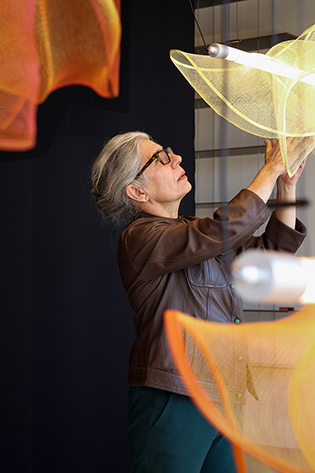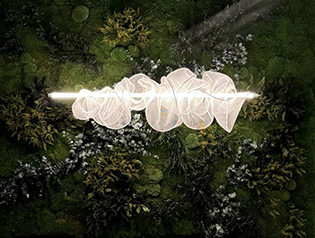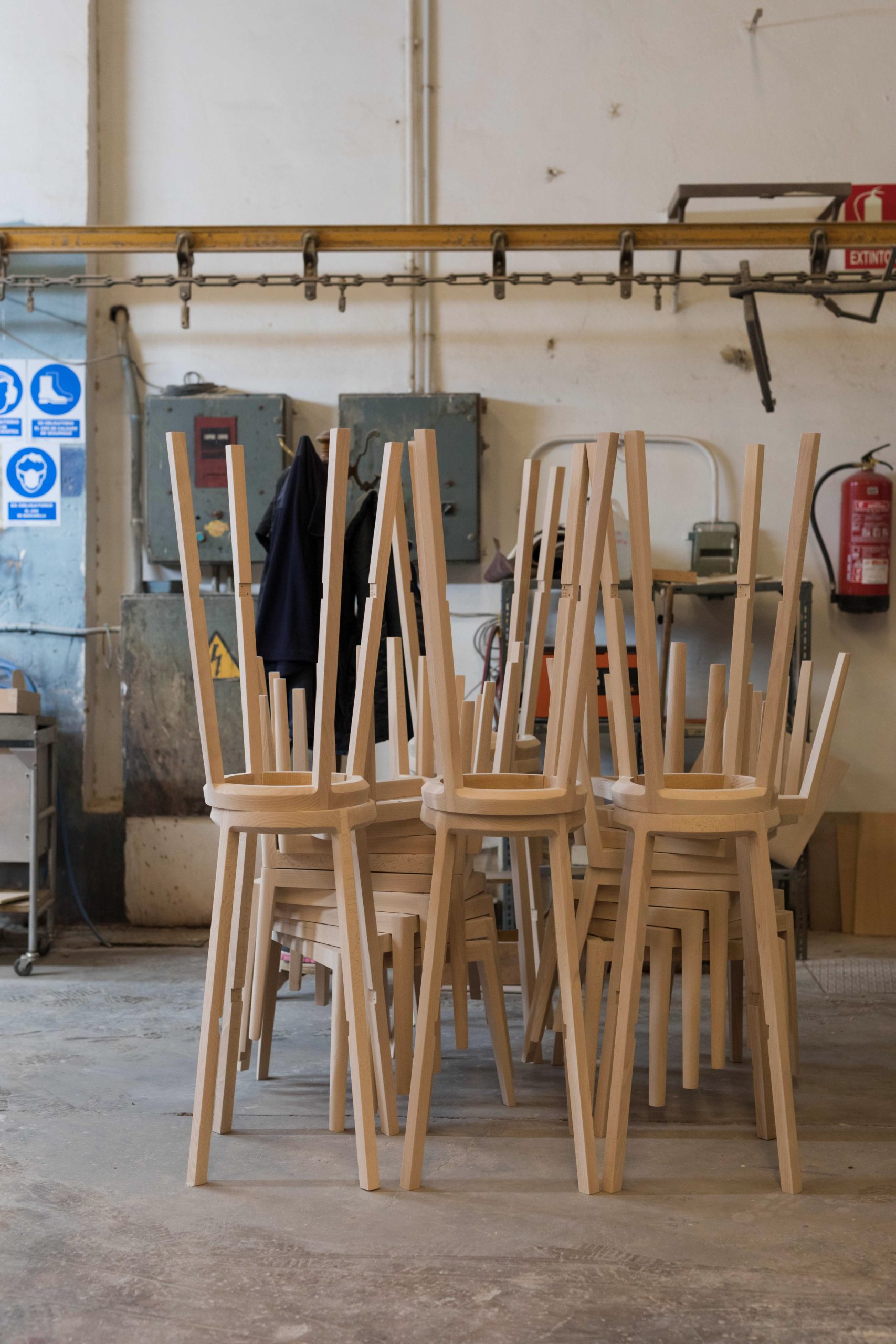Pilar Vélez is the director of the Barcelona Design Museum. With a career dedicated to the museum sector, Pilar was involved in establishing the Museu del Disseny de Barcelona, Spain’s first dedicated design museum. The Museum is a part of the Disseny Hub Barcelona, a multifunctional and multidisciplinary centre that ‘seeks to turn the emerging design sector into a leader in Europe and the world.’ The Barcelona Design Museum offers an extensive collection of design, encompassing product, fashion, and graphic design, alongside decorative, textile, and graphic arts. The Museum gathers together the collections of Barcelona’s previous individual museum libraries: Decorative Arts, Ceramics, Textiles and Clothing, and Graphic Arts.

Pilar Vélez. Photo © Museu del Disseny.
A truly dynamic establishment, Barcelona Design Museum represents the creative and artistic achievements and aspirations—past, present, and future—of the Catalonian capital, the Catalonian region, and Spain. Here, Pilar Vélez discusses museum life in lockdown, Barcelona as a design hub, and her thoughts on the future of design.
Meet Pilar Vélez
What do you enjoy most about your role as Director of Barcelona Design Museum?
(PV) One of the best things about having a responsibility like this is the possibility to discover and learn new things every day. It is thanks to contacts of all kinds, including professionals, researchers, teachers, collectors, and all of those audiences interested in some aspect of our collections. The Museum covers many sectors of design and the arts of the object, allowing us to broaden our view of the social environment in which we move, as well as understanding where we come from and where we are going. You must always have your antennas on.

Barcelona Design Museum. Photo © Iñigo Bujedo Aguirre
How is the Museum working to advance Catalonian and Spanish design, nationally and internationally?
(PV) The Museum is part of a number of international design museum networks and associations with which it shares debates and projects. Exhibitions on current issues are often held in co-production or in collaboration with other museums. By working with agreements and participating in research projects established with universities and design schools, the Museum disseminates information on contemporary design.
Moreover, through social networks and our digital platform, the Museum makes its design and documentary collections available internationally. This is a fundamental resource for the sharing of our knowledge of Catalan and Spanish design. At the present time, the online route is key: it allows the participation of international experts with whom to compare and contrast the current lines of our design, through activities centred around the exhibitions.

Product Design at Barcelona Design Museum. Photo © Museu del Disseny.
As a hands-on cultural and educational institution, how has the Museum adapted to the coronavirus pandemic—is the ‘virtual museum’ an inevitable part of the future?
(PV) During home confinement, the Museum became a one-hundred-percent virtual museum: visits to exhibitions, collections, and the Documentation Center, family activities, games, and conferences, were online. We continued to work hard to bring the Museum’s contents closer to our audiences, using the resources we already had and many new ones. Undoubtedly, the virtual museum is in large part the museum of the present, and of course the future. I believe in the profitability of projects that are proposed in digital format, or face-to-face and digital together. Only in the medium term are they already much more sustainable.
Are there any particular product designs that visitors might be surprised to find as part of the Barcelona Design Museum’s collection?
(PV) In the field of design, especially product design, it is often the simplest designs that are most effective. In this sense, I like to highlight Rafael Marquina’s 1961 anti-drip oil cruet—it is an exceptional object, of which many copies of all sizes, materials, and colours have been made, especially copying the anti-drip system. Today, the old cruet has become an international design icon.

Rafael Marquina’s 1961 oil cruet. Photo © Museu del Disseny.
Unlike many well known design nations, for example Sweden, Denmark, and Italy, Spain is somewhat modest about its contribution to design. Why do you think this is the case?
(PV) Product design is closely linked to industrialisation. It is well-known that in Spain, industrialisation came very late. Only Catalonia and the Basque Country joined in the middle of the 19th century, a fact that was key. This backwardness was not overcome until the second half of the twentieth century.
What are your thoughts on LZF as a Spanish design company and its contribution to the field of lighting design?
(PV) I consider LZF a unique company. Its creations are unmistakable, in the sense that they have their own character—halfway between design, craftsmanship, and artistic creation. This provides LZF’s lamps with a stamp of identity. In addition, I value the work with wood, a material that is being rediscovered in the field of design, and that speaks to us about environmental sustainability.

LZF handcrafts its lamps using natural wood veneer.
What, in your opinion, are the key ingredients that make Barcelona a design hub?
(PV) For Barcelona, there are a number of ingredients that make the city a design hub. It’s a tradition, whose origins date back to the last decades of the nineteenth century. There has been great activism in the city since the 1960s, with the creation of the first professional associations. There is the existence of specialised companies with an international presence. A large number of the city’s colleges and universities are dedicated to teaching various disciplines of design—founded from 1961 to the present, students attend from across the world. There is a sensitivity to the socially responsible design of the present and the future. Such entities as the Foment de les Arts i del Disseny (FAD) and the Barcelona Centre de Disseny (BCD), are now based, like the Barcelona Design Museum, in the Disseny Hub Barcelona. And finally, the Design Museum itself—the only one in Spain—creates, preserves, and documents collections. Moreover, through its public programmes, the Museum reflects critically on the role of design and the designer, on the relationships and boundaries between design and craftsmanship, and on design from a gender perspective.

Product Design at Barcelona Design Museum. Photo © Museu del Disseny.
Is there a particular Catalan/Spanish designer whose work has captured your imagination?
(PV) Given that design has made a quantitative leap in recent decades, the number of designers working on projects of interest is very large. However, in recent years I have been particularly interested in social design, that is, projects that arise from reflection and research in the face of real problems. I’m curious about new fields, such as the recycling of materials to produce designs, and making everyday objects that are within reach of as many people as possible. A perfect example is the cleaning range designed by Imma Bermúdez and produced by SP Berner. The range is sold in supermarkets and the items are made with recycled material, reducing their environmental impact.
What’s on your design wish list?
(PV) A better world, that is, more sustainable, accessible, and useful from all possible perspectives: physical, intellectual, social. That new generations of designers take this way of thinking into account, knowing how to value what was made by their predecessors and taking advantage of it for the future.
This short video offers a brief insight to the Product Design collection at Barcelona Design Museum.













